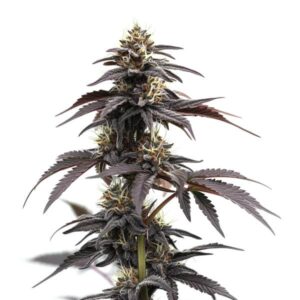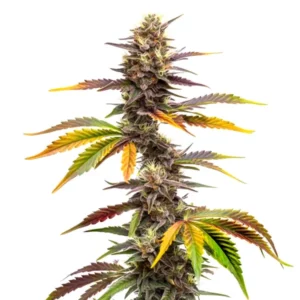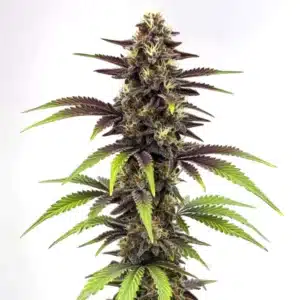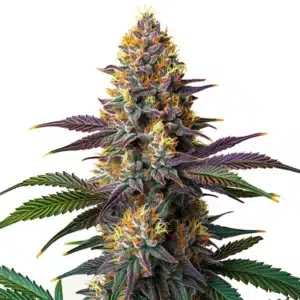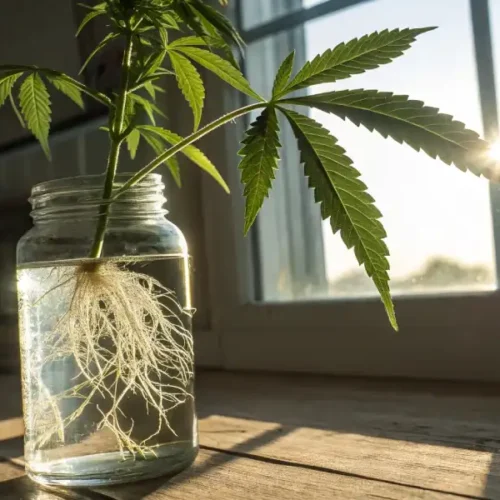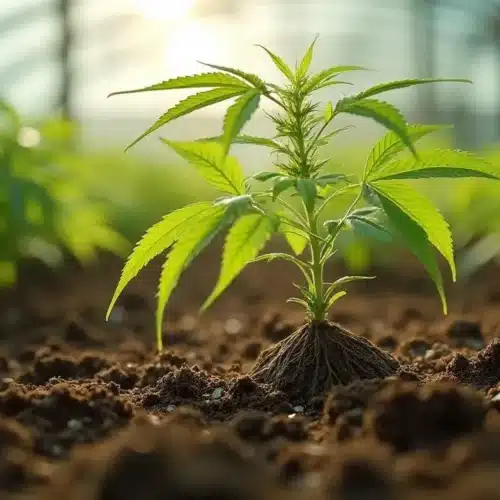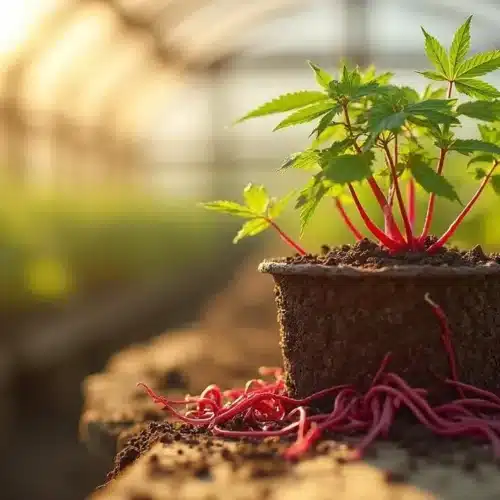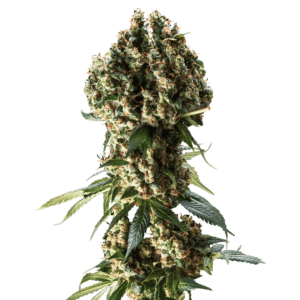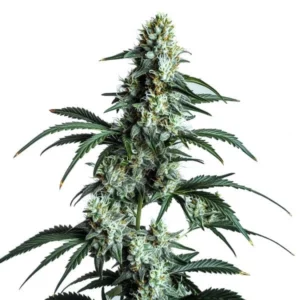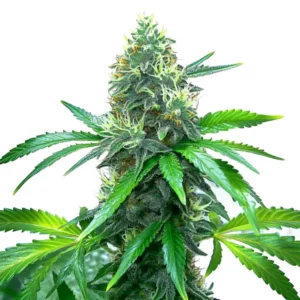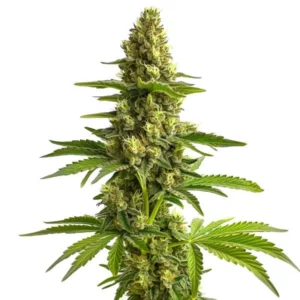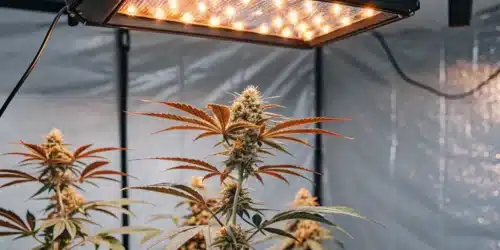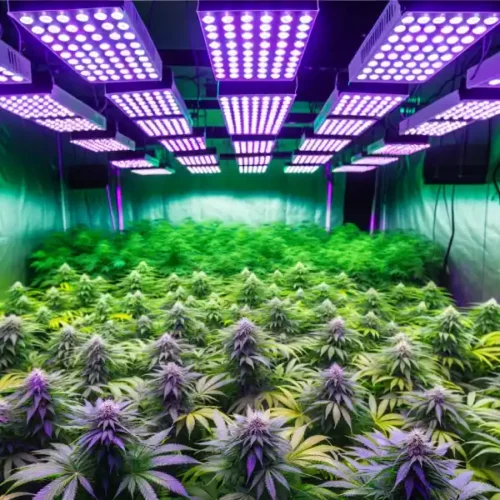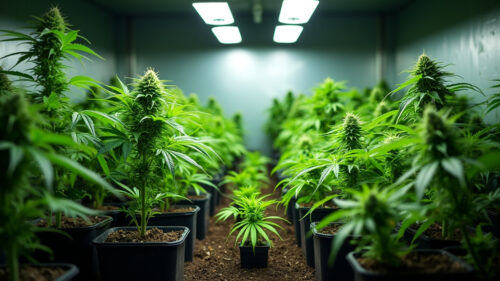High-Intensity Discharge (HID) lights have long been a go-to solution for indoor cannabis growers seeking maximum yield and potency. These powerful lighting systems offer the intensity necessary to mimic the sun’s rays indoors, allowing growers to cultivate cannabis all year round. This guide delves into the types of HID lights, their benefits, the importance of choosing the right ballast, and tips for efficient usage in a grow room.
HID lights are known for their capability to deliver high levels of light intensity, crucial for promoting robust plant growth and flowering. However, they also come with certain challenges, such as heat production and energy consumption, which must be managed carefully to avoid affecting the overall grow environment. By understanding the different types of HID lights and how to use them effectively, growers can maximize their yields while keeping operational costs under control.
Whether you’re a seasoned grower or just starting out, choosing the right lighting system for your grow room is one of the most critical decisions you will make. HID lights have stood the test of time for good reason: they are effective, reliable, and capable of producing top-tier cannabis plants when used correctly.
Types of High-Intensity Discharge Lights
There are two primary types of HID lights commonly used in cannabis cultivation: Metal Halide (MH) and High-Pressure Sodium (HPS). Each type serves a unique purpose in the plant’s growth cycle, providing different wavelengths of light that help optimize growth.
Both MH and HPS lights have proven to be excellent choices for indoor cannabis cultivation. MH lights are favored for the vegetative stage due to their blue spectrum, which encourages lush, green foliage, while HPS lights dominate during flowering due to their red spectrum, which promotes large and dense buds. Many growers opt for a combination of both, switching from MH to HPS as the plants transition from the vegetative to the flowering stage.
Although LED technology is gaining popularity, especially for energy savings, HID lights continue to be a go-to for large-scale operations because of their unmatched ability to penetrate dense canopies and deliver intense light deep into the plants. Their robust performance and proven results make them the trusted choice for growers who want consistency and high yields.
Metal Halide (MH) Lights
Metal Halide lights emit a bluish-white spectrum that closely resembles the sun’s natural light during the spring and summer months. This spectrum is ideal for the vegetative stage of cannabis growth. During this phase, plants require a high amount of blue light to stimulate strong, healthy foliage growth.
Blue light plays an essential role in preventing plants from stretching too much, which can lead to weak stems and reduced yields. The compact and bushy growth encouraged by MH lights helps cannabis plants become sturdy and resilient, preparing them for the heavier flowers they will produce later on during the flowering stage.
MH lights are also particularly useful for growers who cultivate cannabis for cloning purposes. Their ability to promote healthy root systems and leafy growth makes them the ideal choice for ensuring that new clones have the energy they need to survive and thrive during the early stages of development.
High-Pressure Sodium (HPS) Lights
High-Pressure Sodium lights, on the other hand, emit a reddish-yellow spectrum that simulates the light conditions found in late summer and autumn. This color spectrum is highly beneficial during the flowering stage of cannabis plants, helping them produce bigger buds and more resin.
The reddish spectrum provided by HPS lights encourages the plant to focus its energy on flowering rather than vegetative growth. This leads to larger, denser buds that are packed with cannabinoids, terpenes, and other desirable compounds. When used correctly, HPS lights can significantly increase the overall yield of your grow operation.
One notable advantage of HPS lights is their ability to cover larger grow areas. This makes them highly suitable for growers with medium to large-scale operations who need to maximize light distribution across multiple plants without sacrificing intensity.
Choosing Between MH and HPS Lights
Many growers prefer to use both MH and HPS lights throughout the growth cycle of their cannabis plants. This technique ensures that plants receive the most suitable light spectrum at each stage of their development. However, for those who want to minimize their investment or simplify their setup, using HPS lights exclusively throughout the entire growth cycle can still produce successful results, though it may not optimize foliage growth in the vegetative phase.
Growers who use both types of lights often switch from MH to HPS once they enter the flowering stage. This switch not only aligns with the plant’s natural seasonal light needs but also ensures that the plants receive the optimal spectrum for producing large, high-quality buds. Although this setup might involve higher upfront costs, the yield and quality of the final product often justify the investment.
For those on a budget or with smaller grow spaces, sticking with just one type of light, particularly HPS, can still deliver good results. However, it’s important to closely monitor your plants for any signs of stress, as using only HPS lights during the vegetative phase may sometimes cause plants to stretch more than desired.
Promos & Deals
The Importance of Ballasts in HID Lighting
Ballasts play a crucial part in operating HID lights safely and efficiently. A ballast regulates the electrical current that flows to the light, ensuring that it stays within a safe range. Without a ballast, HID lights can quickly overheat or malfunction, which could lead to fire hazards or other safety issues.
Ballasts are essential because they provide the initial voltage needed to start the lamp and then stabilize the electrical current for consistent performance. Without the proper ballast, your HID light may not perform at its best, and the lifespan of the bulb can be significantly shortened. In short, the ballast is the engine behind the light, ensuring everything runs smoothly and safely.
The quality of your ballast will directly impact the overall efficiency of your grow operation. Investing in a high-quality ballast can save you money in the long run by reducing energy consumption and extending the life of your bulbs. It’s an essential part of the HID lighting system that should never be overlooked.

Types of Ballasts for HID Lights
There are two main types of ballasts used in conjunction with HID lights: magnetic and digital ballasts. Each has its own advantages and disadvantages, and choosing the right ballast depends on factors such as budget, efficiency, and the desired lifespan of the lighting system.
The decision between magnetic and digital ballasts often comes down to cost and efficiency. Magnetic ballasts are more affordable and have been used for decades in HID lighting systems, but they are less efficient, produce more heat, and tend to be bulkier. On the other hand, digital ballasts are more expensive upfront but offer increased efficiency, lower heat output, and greater control over the light’s performance.
Some growers prefer magnetic ballasts for their durability and reliability, especially in large-scale operations where cost is a significant factor. Digital ballasts, however, are becoming more popular due to their energy-saving benefits and enhanced flexibility, such as the ability to dim the lights or run multiple wattages.
Magnetic Ballasts
Magnetic ballasts are the traditional type of ballast used with HID lighting systems. While they are generally more affordable upfront, they are less energy-efficient compared to digital ballasts. Additionally, they tend to generate more heat and noise, which can be an issue in smaller grow spaces.
Magnetic ballasts are known for their durability and long lifespan. They have been a staple in HID lighting for years and are often favored by growers who need reliable, long-term performance. However, the extra heat generated by these ballasts can make managing grow room temperatures more challenging, especially in smaller spaces with limited ventilation.
While they lack some of the modern features of digital ballasts, magnetic ballasts are still a viable option for those who are looking for a cost-effective solution that can handle the demands of larger grow operations. They may not be the most energy-efficient choice, but their low initial cost and reliability make them a popular option among traditional growers.
Digital Ballasts
Digital ballasts are a more modern and efficient alternative to magnetic ballasts. These ballasts use microprocessors to regulate the flow of electricity, leading to lower energy consumption, less heat generation, and a quieter operation. They also allow growers to adjust the light’s intensity, giving them greater control over the environment in their grow room.
The ability to dim or adjust the wattage on digital ballasts is particularly useful for growers who want to save energy during the vegetative stage or when they’re working with younger plants that don’t require full light intensity. This feature can also help extend the lifespan of the bulbs, as the reduced strain prevents premature wear and tear.
While digital ballasts are more sensitive to power surges, they often come with built-in protection mechanisms to prevent damage from voltage fluctuations. Their efficiency and flexibility make them an attractive choice for modern growers who want to maximize their lighting system’s performance while minimizing energy costs.
Maximizing Efficiency with HID Lighting
Using HID lights effectively requires more than just installing the lights and turning them on. To get the most out of your lighting system, there are several factors to consider, such as light distance, ventilation, and energy consumption.
Maximizing efficiency starts with selecting the right wattage and positioning your lights correctly. Cannabis plants benefit from intense light during the flowering stage, but too much light or heat can cause stress, leading to reduced yields or quality. Monitoring the distance between the lights and the plants is crucial for maintaining a healthy grow environment.
Managing heat is another critical aspect of maximizing efficiency. HID lights produce significant amounts of heat, which can impact both the plants and the grow room. Implementing proper ventilation, using fans, and possibly incorporating air-cooled reflectors can significantly reduce the risk of heat stress and help maintain an optimal environment for your plants.
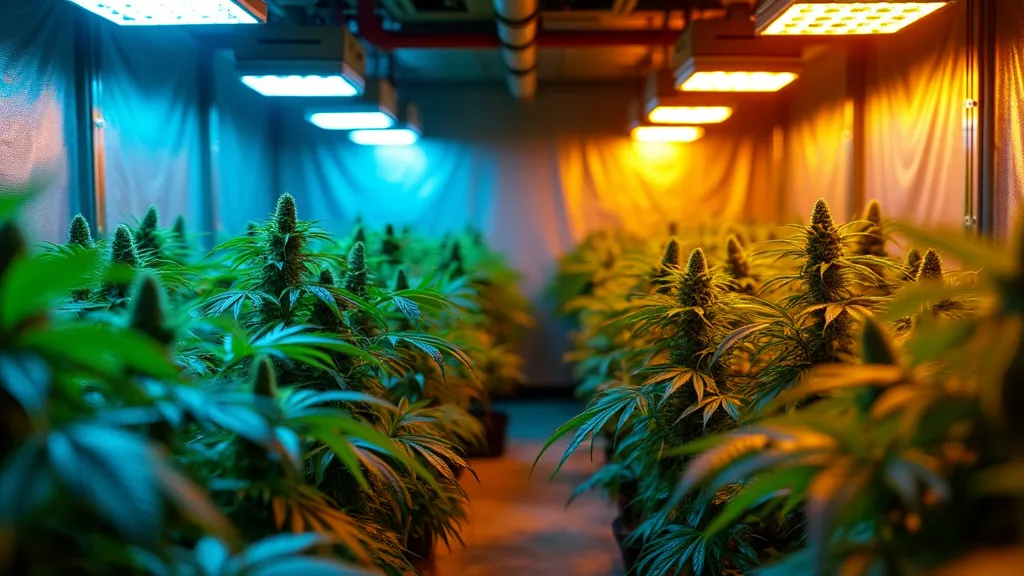
Light Distance from Plants
The distance between your HID lights and your cannabis plants is crucial. If the lights are too close, they can cause heat stress and burn the plants. If they are too far away, the plants won’t receive enough light, leading to slow growth and reduced yields.
Determining the correct distance requires regular monitoring of your plants’ reactions. If leaves are curling or showing signs of light burn, the lights are likely too close. Conversely, if the plants appear to be stretching excessively, they may not be receiving enough light, indicating that the lights need to be lowered.
A good practice is to start with the recommended distance and make gradual adjustments based on your plants’ feedback. This approach helps ensure that your cannabis plants receive the optimal amount of light without being exposed to excess heat or stress.
Ventilation and Heat Management
HID lights are notorious for generating a significant amount of heat, which can lead to problems such as heat stress, dehydration, and mold growth. Proper ventilation is key to maintaining a stable environment in your grow room.
Proper heat management is crucial for achieving optimal results with HID lighting. High temperatures can cause plants to wilt, reduce yields, and create a breeding ground for pests and mold. Keeping your grow room well-ventilated ensures that the heat generated by the lights is expelled quickly, maintaining a stable temperature within the optimal range for cannabis growth.
In addition to installing exhaust fans, many growers use air-cooled reflectors that help to contain and channel the heat away from the grow area. This setup can reduce the overall temperature inside the grow room, creating a more stable environment that supports plant health and vigor.
Energy Consumption and Cost Efficiency
HID lights consume a considerable amount of energy, especially when running for 12-18 hours a day during the vegetative and flowering stages. This can lead to high electricity bills, which is something to consider when choosing your lighting system.
Balancing energy consumption with the need for high light intensity is a challenge for HID growers. While HID lights are known for their output, they are also energy-hungry. Monitoring electricity usage and employing energy-saving techniques, such as using dimmable ballasts, can help reduce overall consumption without sacrificing plant growth.
Many growers also take advantage of time-of-use electricity pricing by scheduling their lights to run during off-peak hours. This can help reduce electricity costs while still providing the plants with the light they need for healthy growth and robust flowering.
Common Mistakes When Using HID Lights
While HID lights are effective for growing cannabis, there are some common mistakes that novice growers often make. Being aware of these potential pitfalls can help you avoid costly errors and maximize your harvest.
One of the most frequent mistakes is failing to manage heat properly. As mentioned earlier, HID lights generate a lot of heat, and if your grow space is not adequately ventilated, this can lead to plant stress, reduced yields, and even crop failure. Regularly checking the temperature and adjusting ventilation is key to preventing these issues.
Another mistake is improper light scheduling. Cannabis plants require specific light cycles depending on their growth stage, and inconsistent light schedules can confuse the plants, leading to poor growth or hermaphroditism. Using timers is an effective way to maintain consistency and prevent unnecessary stress on the plants.
Overheating Your Grow Space
One of the biggest challenges with HID lights is the amount of heat they generate. Failing to properly ventilate your grow room can cause temperatures to rise quickly, leading to plant stress and reduced yields. Make sure to install an adequate ventilation system and monitor temperatures regularly.
To avoid overheating, consider using air-cooled reflectors and ensuring that your grow room has a proper intake and exhaust system in place. These measures will help control temperatures and prevent the heat from reaching levels that could harm your plants. It’s also important to place oscillating fans throughout the grow room to ensure that the heat is evenly dispersed.
Temperature control becomes even more crucial during the summer months when ambient temperatures are higher. Ensuring that your HID lights are not contributing excessively to the heat is essential to avoid unnecessary strain on both your plants and your cooling system.
Ignoring Light Schedules
Cannabis plants thrive on consistent light schedules. During the vegetative stage, they need around 18 hours of light per day, while in the flowering stage, they require 12 hours of light and 12 hours of darkness. Interrupting these cycles can confuse the plants, leading to poor growth or even hermaphroditism.
Sticking to a regular light schedule not only ensures optimal growth but also helps the plants establish a strong internal rhythm, making the transition between growth stages smoother. Inconsistent light patterns can shock the plants, which may manifest as stunted growth, delayed flowering, or abnormal development.
Automating the light schedule with timers ensures that the plants receive the correct amount of light and darkness without interruption. This is particularly important during the flowering stage, where even minor interruptions to the dark cycle can cause the plants to revert to vegetative growth or develop unwanted male characteristics.
Neglecting Proper Ballast Maintenance
Ballasts are essential for keeping HID lights running safely and efficiently. Failing to maintain or replace ballasts when needed can lead to reduced light output or even electrical fires. Always check your ballasts for signs of wear and replace them as needed.
Regularly inspecting your ballasts for any signs of overheating or malfunction is critical to maintaining a safe and efficient grow operation. If you notice flickering lights, excessive heat, or strange noises coming from the ballast, it’s time to consider a replacement. Keeping spare ballasts on hand is always a good idea, particularly for large grow operations where downtime can result in significant losses.
Proper maintenance also involves ensuring that the ballast is kept in a well-ventilated area. This will help reduce the chances of overheating and extend the lifespan of the equipment, ensuring that your HID lights continue to function at peak efficiency throughout the grow cycle.
FAQs about HID Lights for Cannabis Growing
Are HID lights still the best option for growing cannabis indoors?
HID lights remain a popular choice due to their ability to produce intense light that mimics the sun’s natural rays. However, newer technologies such as LED lights are gaining traction for their energy efficiency and lower heat output. HID lights are still highly effective, particularly for large-scale grows or those looking for maximum yield.
Despite the rising popularity of LED lights, HID systems continue to dominate in commercial grow operations where high yields are paramount. Many growers who switch to LEDs find that while they save on energy costs, the overall intensity of the light cannot match that of HID systems, particularly for flowering. For growers who prioritize maximum yield and potency, HID lights remain a top choice.
That said, HID lights do require more attention to heat management and energy consumption, which is why some smaller-scale growers are making the switch to LEDs. But for those who can manage the heat and electricity costs, HID lights are still unmatched in their ability to produce dense, resin-packed buds.
How do I choose the right wattage for my HID lights?
The wattage of your HID lights depends on the size of your grow space and the number of plants you’re growing. A general rule of thumb is to use 400-600 watts for a small grow (up to 6 plants) and 1000 watts for larger grows (8+ plants). Always ensure that your grow room is well-ventilated to accommodate the heat produced by higher-wattage lights.
It’s important to balance the intensity of the light with the size of the grow space. Using too much wattage in a small area can lead to overheating and wasted energy, while using too little wattage in a large space can result in poor plant growth. Calculating the total square footage of your grow area and matching it to the appropriate wattage will help ensure optimal light distribution and plant health.
Growers should also consider the type of reflector being used, as this will impact how the light is dispersed. Air-cooled reflectors, for instance, allow for closer positioning of the lights to the plants, which can help increase light intensity without increasing heat stress.
Can I use HID lights throughout the entire growth cycle?
Yes, many growers use HID lights from seedling to harvest. Metal Halide lights are typically used during the vegetative stage, while High-Pressure Sodium lights are preferred for the flowering stage. However, some growers use only HPS lights throughout the entire cycle with satisfactory results.
While the combination of MH and HPS lights is considered ideal for providing the optimal spectrum at each stage of growth, some growers prefer the simplicity and cost-effectiveness of using only HPS lights. This can be a viable option for growers who are looking to minimize their equipment or who are growing on a tighter budget.
For those who use HPS exclusively, it’s important to monitor the plants closely during the vegetative stage to ensure they are not stretching too much due to the lack of blue light. Supplementing with additional light sources or adjusting the light distance can help counteract this issue and promote healthy growth.
How long do HID bulbs last?
HID bulbs typically last between 12,000 and 24,000 hours, depending on the brand and quality. However, over time, they lose their brightness and efficiency, so it’s recommended to replace bulbs after every couple of grows to ensure optimal light output.
Regularly replacing your HID bulbs is crucial to maintaining the intensity of the light, especially during the flowering stage where plants require high light levels to produce large, dense buds. While it may be tempting to wait until the bulb burns out completely, the gradual loss of intensity can result in reduced yields and potency.
Growers should also be aware of the signs that a bulb is nearing the end of its life. If the light output appears dim or uneven, or if the bulb is flickering, it’s time to replace it. Keeping spare bulbs on hand ensures that you can make quick replacements without disrupting the grow cycle.

